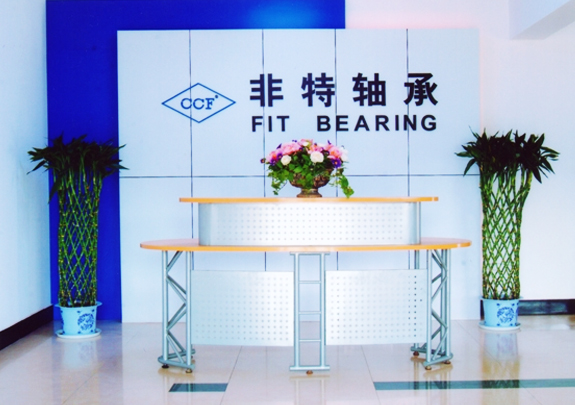Ball Bushings
VIEW DETAILS
VIEW DETAILS

Zhejiang Fit Bearing Co., Ltd. was established in November 2003 with a registered capital of USD 2 million. The plant covers an area of 35,000 square meters and 20,000 square meters, with more than 120 workers and more than 20 technical management personnel.
At the beginning of its establishment, the company specialized in producing all kinds of low-noise long-life ball bearings. As a professional China Linear Ball Bushings Suppliers and Linear Ball Bushings Manufacturers, After years of development in the bearing industry, we have accumulated rich experience in production and management. In 2013, we began to vigorously develop agricultural machinery parts and construction machinery parts. At present, we have formed a team with exquisite technology and excellent management, capable of R&D, manufacturing, sales and service in the bearing industry and agricultural machinery parts. After years of hard work and development, we have formed a capable R&D and manufacturing team. They have rich knowledge and experience in materials, heat treatment, machining and grinding. There are currently 9 professional R&D engineers responsible for the development of new products.
The main shaft bearing is the most important component in the engine. If the main shaft bearing fails, it will directly cause the engine to stop running. In order to improve the reliability of the eng...
Read MoreBearing failure is a common problem during the operation of bearings, and the form of wear is a type of bearing failure. Wear can also cause significant damage to bearings, and repairing a few pieces ...
Read MoreThe working temperature of cylindrical roller bearings depends on various factors, including the heat output of all relevant heat sources, the heat flow rate between heat sources, and the heat dissipa...
Read MoreCan linear ball bushings accommodate both radial and axial loads simultaneously?
Linear ball bushings are a type of linear motion bearing that can indeed accommodate both radial and axial loads simultaneously. These versatile components are commonly used in various applications where smooth and precise linear motion is required, such as in machine tools, robotics, automation equipment, and packaging machinery.
Linear ball bushings consist of an outer cylindrical housing and a set of balls that roll between the housing and the inner race. These balls are arranged in a circular pattern, allowing for smooth and low-friction movement in a linear direction. The balls are recirculated within the housing, which ensures consistent and reliable performance.
When it comes to load capacity, linear ball bushings are designed to handle both radial and axial loads. Radial loads refer to forces that act perpendicular to the axis of the shaft, while axial loads refer to forces that act parallel to the axis. In many applications, both types of loads are present simultaneously.
The ability of linear ball bushings to accommodate radial loads is due to the contact between the balls and the cylindrical surfaces of the housing and inner race. The balls distribute the load evenly across the entire raceway, allowing for efficient transfer of radial forces. This ensures that the bearing can withstand the radial forces exerted on it without compromising performance or causing premature wear.
Additionally, linear ball bushings are designed to handle axial loads. The axial load-carrying capacity of these bearings depends on factors such as the type and size of the bearing, as well as the materials used in its construction. Manufacturers provide load ratings for their linear ball bushings, which indicate the maximum axial load that the bearing can handle.
To accommodate axial loads, linear ball bushings are equipped with features that provide axial guidance, preventing the shaft from moving laterally as a result of these loads. The outer cylindrical housing typically includes flanges or other types of axial stops that restrict the movement of the shaft in the axial direction. This ensures that the axial forces acting on the bearing do not cause misalignment or damage.
How do linear ball bushings contribute to reducing friction and wear in linear motion systems?
Linear ball bushings contribute to reducing friction and wear in linear motion systems through their unique design and construction. Here are several ways in which they achieve this:
1. Ball bearings: Linear ball bushings utilize ball bearings, which help distribute the load evenly and maintain low friction during linear motion. The balls act as rolling elements between the shaft and the housing, reducing the surface contact and friction compared to sliding or plain bearings. This design minimizes frictional heat generation and wear, resulting in improved efficiency and extended service life.
2. Self-lubrication: Many linear ball bushings are designed with integrated lubrication systems. These systems can include grease grooves or slots in the housing, which allow for the distribution of lubricant to the balls and raceways. The lubricant helps reduce friction and wear by providing a protective film between the sliding surfaces.
3. Sealing solutions: Linear ball bushings often incorporate sealing solutions to prevent contaminants from entering the bearing and causing damage. For instance, they may incorporate rubber or metal seals that offer effective protection against dust, dirt, and other particles. By keeping the internal components clean and free from contaminants, the risk of friction and wear is minimized.
4. Precision manufacturing: Linear ball bushings are precision-made components, manufactured to tight tolerances. The balls and raceways are machined to precise dimensions, ensuring a proper fit and smooth operation. This precise manufacturing process helps to minimize the clearance between the balls and the raceways, reducing the likelihood of friction and wear.
5. Choice of materials: Linear ball bushings are typically made from high-quality materials such as hardened steel or stainless steel. These materials offer excellent durability and resist wear and corrosion. Additionally, some manufacturers offer polymer or composite ball bushings, which can provide exceptionally low friction and eliminate the need for external lubrication.